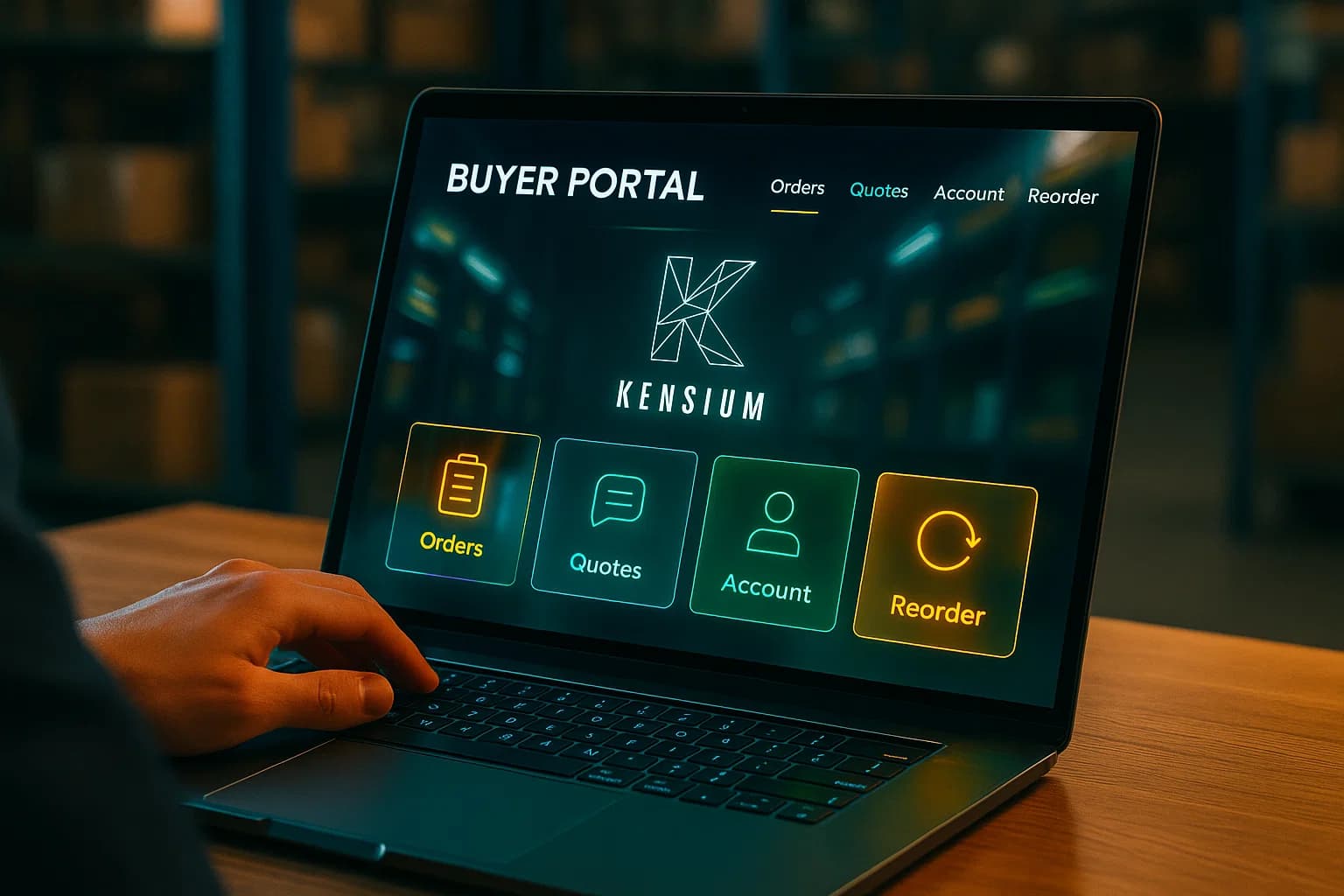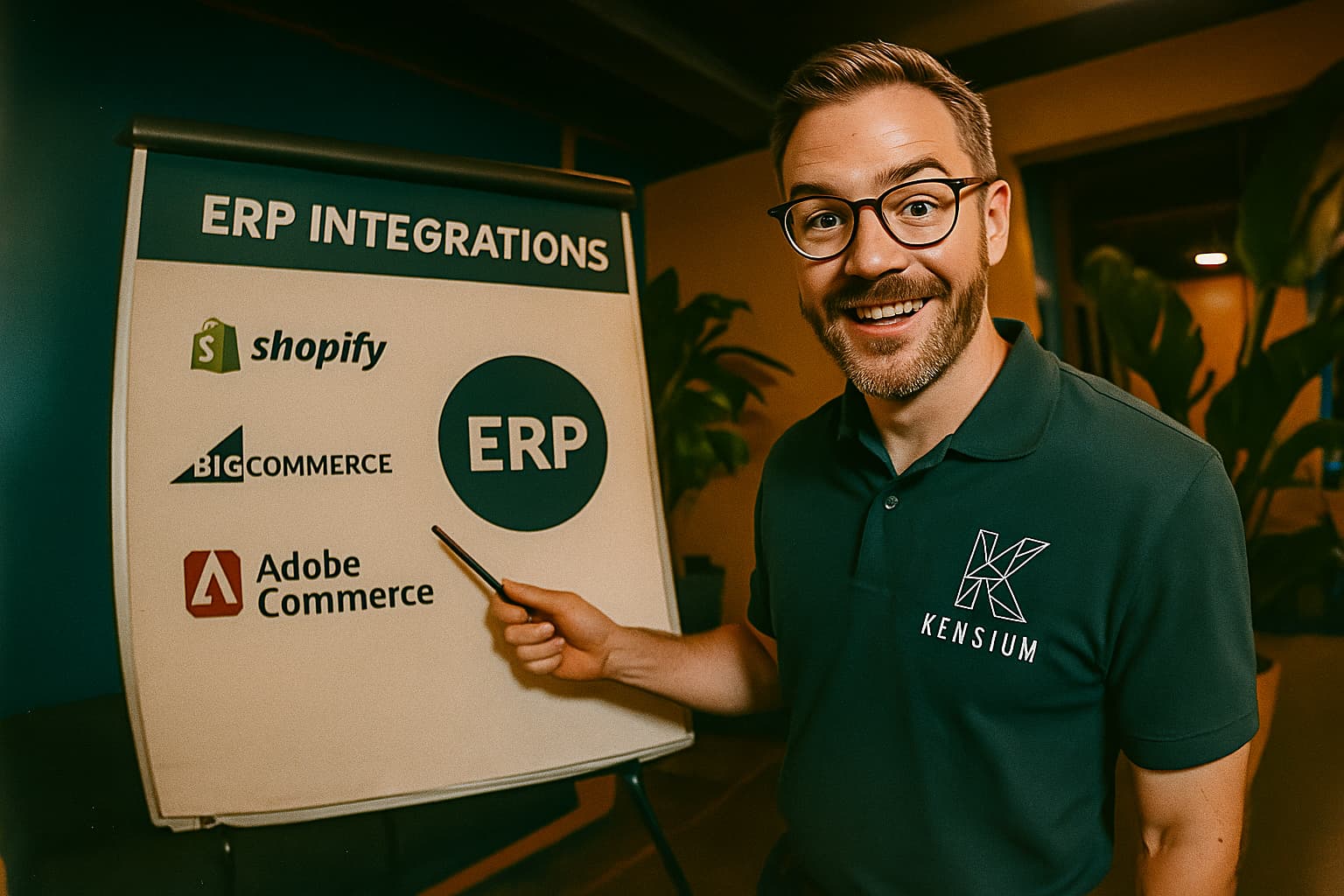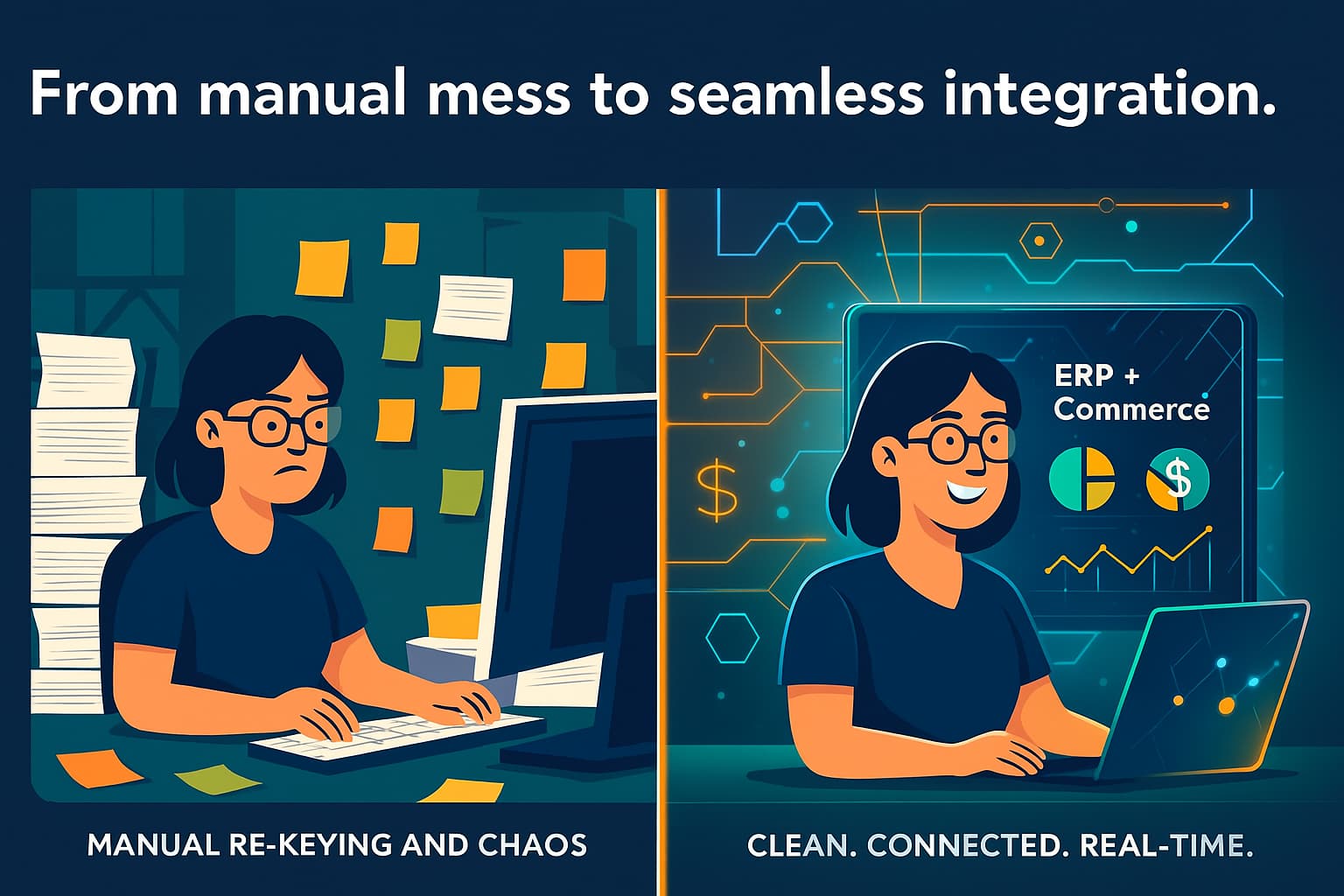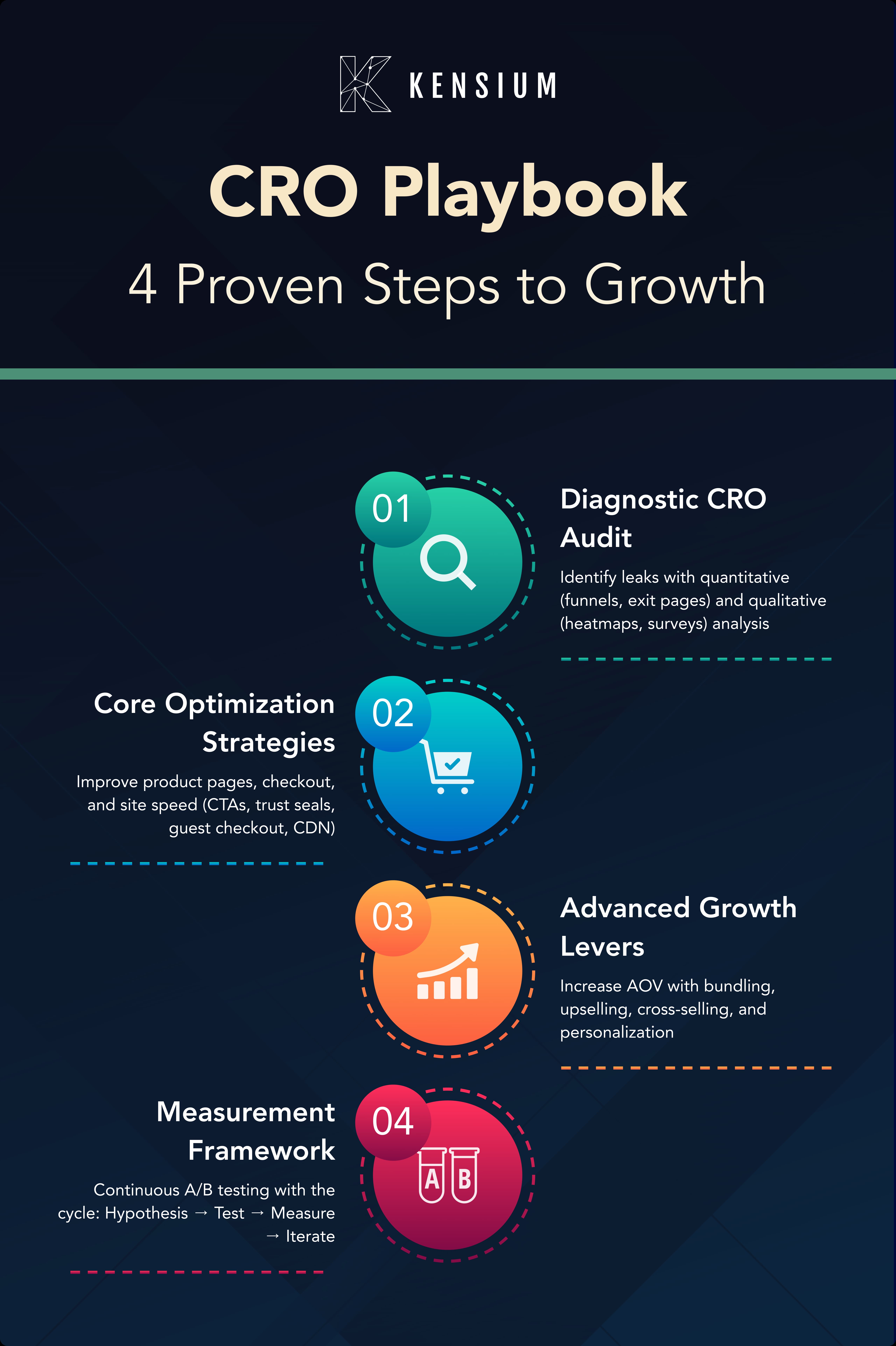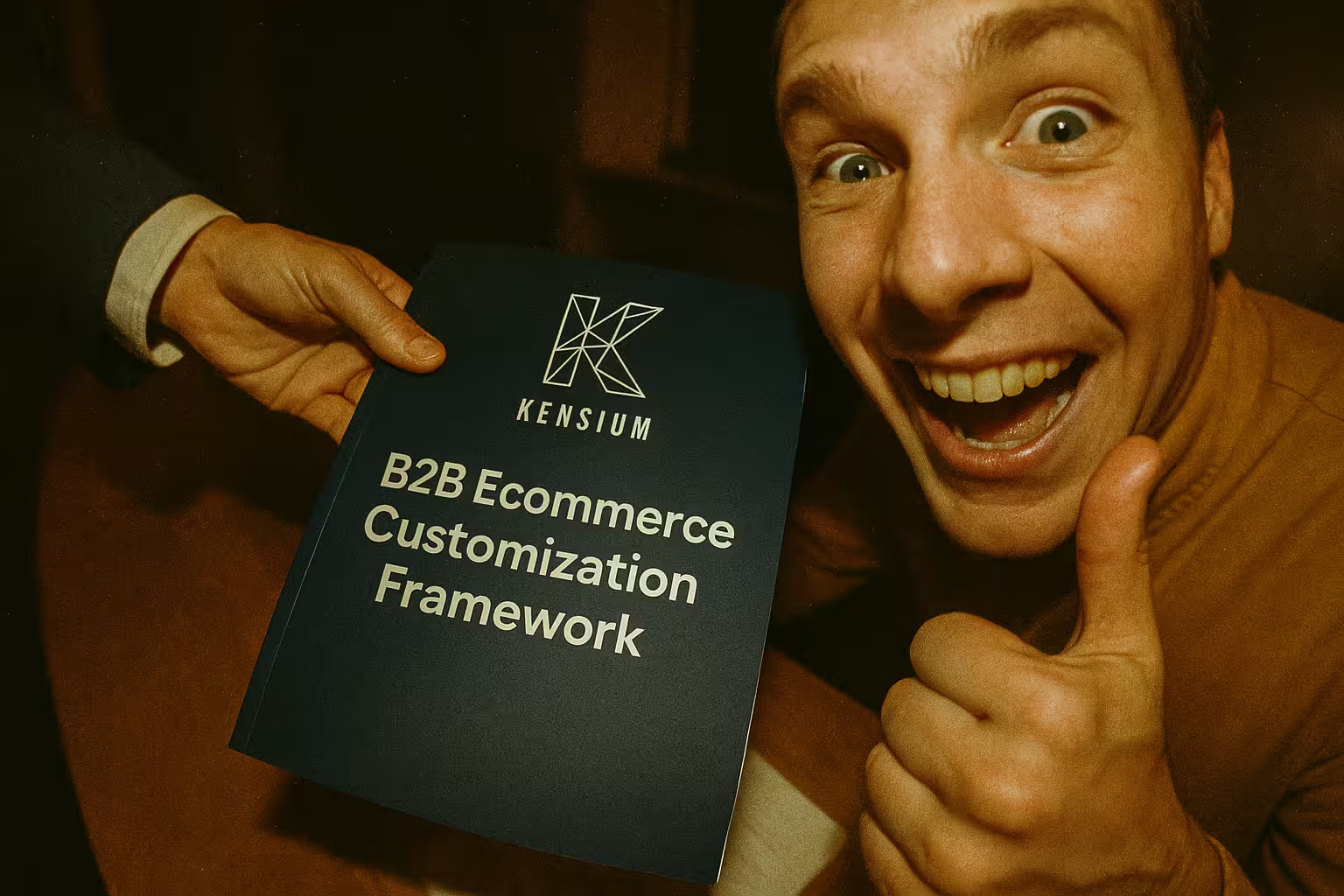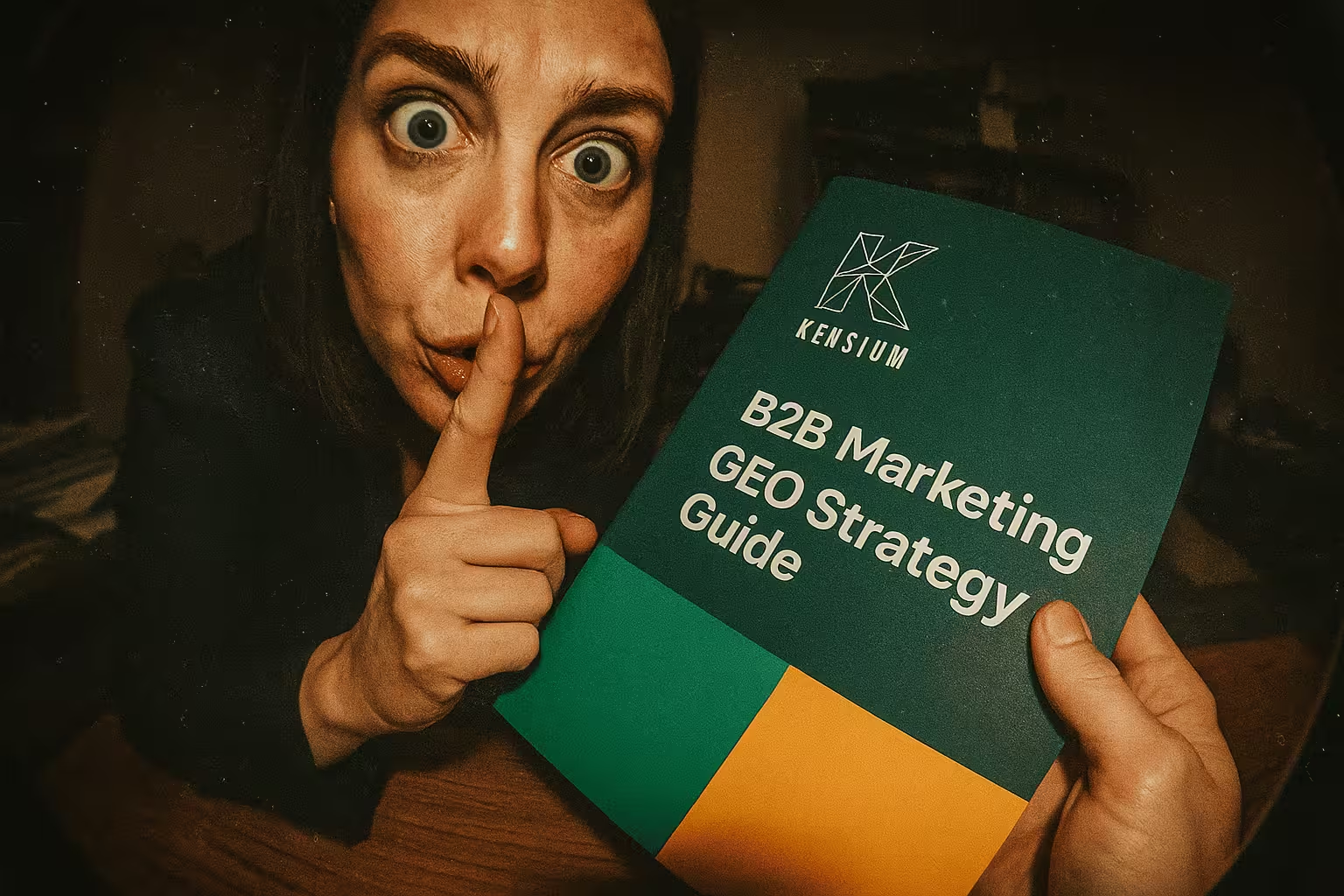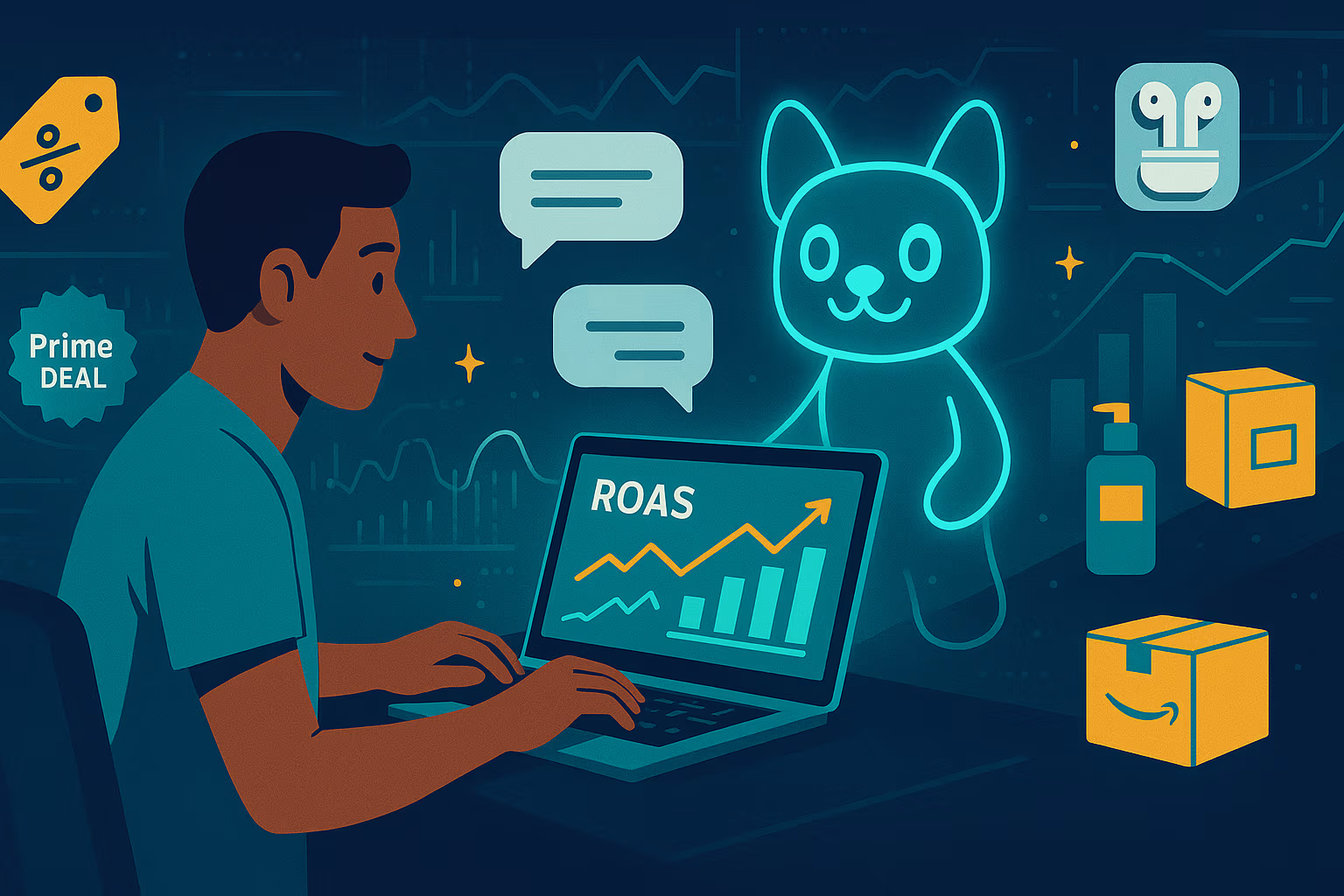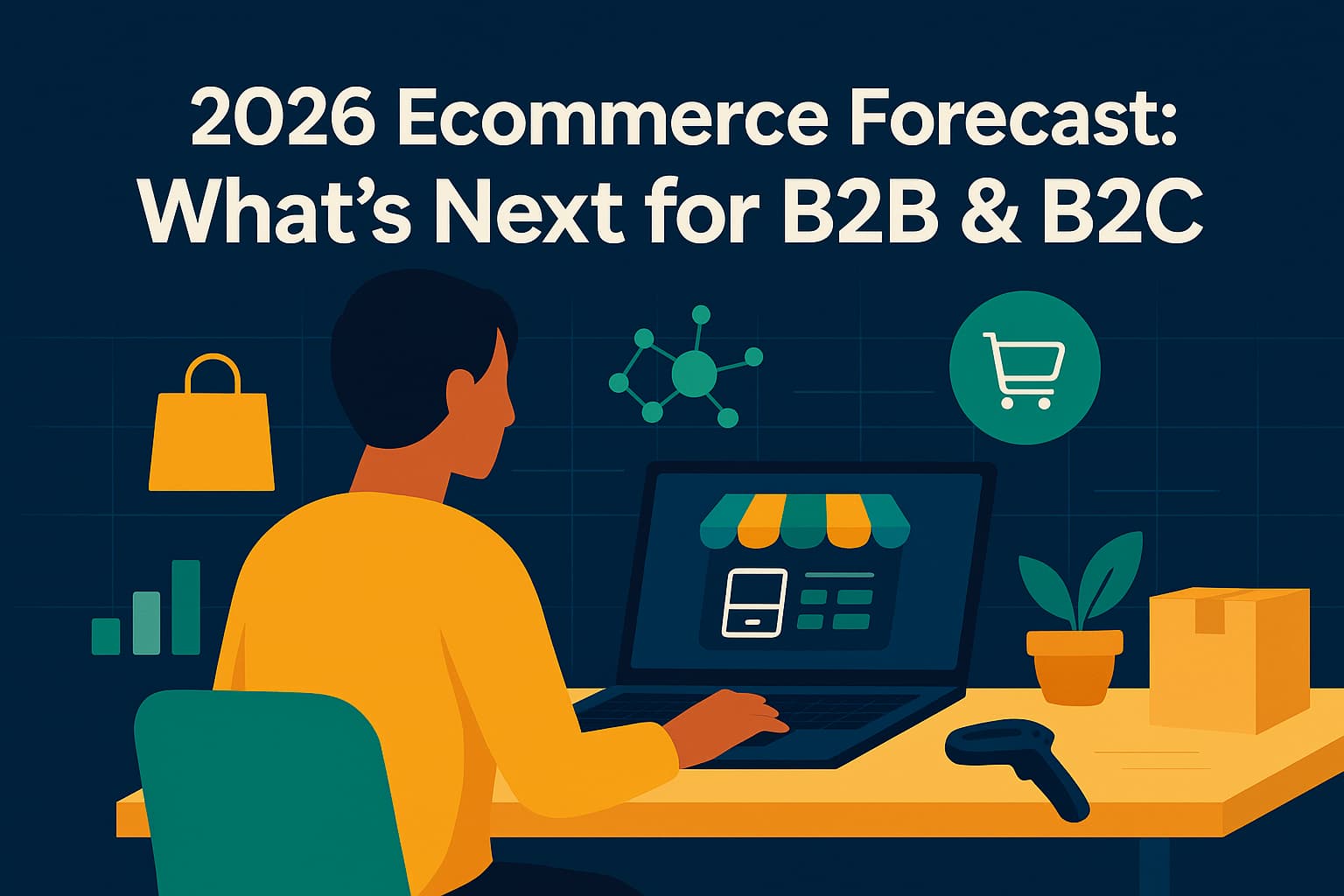
If 2024–2025 were the years AI and composability moved from slideware to shop floors, 2026 is when they become table stakes. Search is changing, storefronts are going headless by default, and buyers expect self-serve, personalized experiences whether they’re a procurement manager or a weekend shopper. Below is our 2026 outlook across Shopify, BigCommerce, Adobe Commerce (Magento), and Google—plus a Kensium action plan to start the year fast.
Who we are (and why this matters)
Kensium is a full-service digital commerce and ERP integration partner—Adobe/Magento (Adobe Commerce) Gold, BigCommerce Elite, and a trusted Shopify Plus agency—with deep Acumatica expertise and prebuilt connectors that keep product, pricing, inventory, and orders in real time across your stack. That means our “trend” advice is paired with integration reality. (Acumatica Cloud ERP)
Five big trends shaping 2026
1) AI-native storefronts and shopping agents
Shopify’s push into generative setup and on-store AI accelerators lowers build time and raises expectations for rapid site iteration. Meanwhile, AI shopping agents from major players are beginning to research and even transact on behalf of users—changing how products get discovered. Optimizing for “agent SEO” (structured data, semantics, trust signals) becomes as important as classic rankings. (Reuters)
What to do:
- Ship smaller, faster changes using AI-assisted creation—then validate with experimentation.
- Mark up products (schema.org), maintain clean feeds, and invest in authoritative content that agents can cite and summarize.
2) Google’s AI Overviews = new funnel math
AI Overviews increasingly cover research queries; bottom-funnel clicks still flow through traditional results and Shopping ads. Expect more zero-click SERPs—plan for visibility and on-SERP utility. (Search Engine Land)
What to do:
- Shift content toward intent clusters and long-tail tasks (“compare”, “best for”, “specs vs”).
- Double down on Merchant Center hygiene and Performance Max to capture transactional demand. Track Merchant Center Next updates. (DataFeedWatch)
3) Composable by default (especially for B2B)
BigCommerce’s Catalyst has made headless storefront deployment far faster, and Adobe Commerce continues to emphasize personalized search/merchandising and 2026 roadmap integrations with Adobe Experience Platform. Composability lets you tailor buyer portals, quoting, and complex pricing without sacrificing speed. (Digital Commerce 360)
What to do:
- Choose a storefront framework (e.g., Catalyst + Next.js) or Adobe’s headless patterns, then plug in best-of-breed search, PIM, and CMS.
- Use Kensium’s ERP connectors to keep inventory/pricing authoritative across channels. (kensium.com)
4) B2B goes self-serve on retail rails
Shopify’s native B2B features (company profiles, payment terms, price lists) let you run wholesale and DTC from one admin. Expect more blended catalogs, account-based pricing, and quick-order tools across platforms. (Shopify)
What to do:
- Stand up an authenticated B2B portal with contract pricing and net terms while sharing product content with DTC.
- Tie orders and credit limits back to ERP for real-time availability and fulfillment logic (multi-warehouse, kits). (kensium.com)
5) Content velocity + brand control with AI
Adobe’s GenStudio and Target guidance point to AI-assisted asset creation and testing—get to “right message, right segment” faster while staying on brand. (Adobe Business)
What to do:
- Centralize briefs, brand rules, and creative variants; run always-on experiments across PDPs and landing pages.
- Feed win/loss insights back into product copy and merchandising rules.
Platform-specific 2026 plays
Shopify / Shopify Plus
- Spin up and iterate faster with AI Store Builder and native B2B features; reserve engineering time for custom workflows (approvals, quotes). (Reuters)
- Data layer discipline: ensure GA4 + server-side tagging and product schema are pristine for agents and Overviews.
- Feed excellence: keep Merchant Center attributes (GTIN, condition, shipping, returns) complete; sync price/availability from ERP. (DataFeedWatch)
BigCommerce
- Adopt Catalyst for a composable, Next.js storefront with rapid performance wins and easier headless builds. (developer.bigcommerce.com)
- B2B focus: use price lists, buyer roles, and quotes; connect to Acumatica for complex fulfillment and multi-warehouse accuracy. (kensium.com)
Adobe Commerce (Magento)
- Personalized search & merchandising with Adobe’s AI; prep for 2026 roadmap items like deeper AEP integration and faster B2B deployments. (Adobe Business)
- Headless gradually: move critical journeys (PLP/PDP/checkout) to headless while maintaining admin and OMS stability.
Google (Search + Shopping)
- Plan for AI Overviews: capture research with helpful, source-worthy content; win the click with compelling offers and fast UX when users shift to classic results. (Search Engine Land)
- Merchant Center Next readiness: keep feeds spotless, embrace rich attributes, and use Performance Max to offset declining organic CTR for commodity terms. (DataFeedWatch)
Ready to move?
Whether you’re launching a B2B portal on Shopify, going composable on BigCommerce, or personalizing with Adobe Commerce—Kensium brings the storefront, ERP, and marketing pieces together so your 2026 plan isn’t just a slide—it’s live code, synced data, and measurable lift. Let’s align your platform roadmap with a 60-day execution plan and start Q1 strong. (kensium.com)
FAQ: 2026 Ecommerce Trends, AI Search, and B2B Digital Transformation
1. What are the biggest ecommerce trends for 2026?
The major 2026 shifts include AI-native storefronts, shopping agents influencing product discovery, Google’s AI Overviews reshaping top-of-funnel traffic, composable architecture becoming default for B2B brands, and accelerated content/creative velocity through AI. Retailers and manufacturers that prioritize structured data, ERP-connected inventory accuracy, and fast experimentation will win visibility and conversions.
2. How will AI shopping agents change ecommerce?
AI agents increasingly research, compare, and even transact on behalf of buyers. They rely heavily on structured data, clean product feeds, trusted sources, and strong semantics. This creates a new discipline—Agent SEO—where brands must optimize for machine interpreters, not just human searchers. Schema markup, clear specs, authoritative content, and real-time pricing/availability become mandatory.
3. What does Google’s AI Overviews mean for organic traffic?
Google now answers many research queries directly inside AI Overviews, reducing classic “blue-link” clicks. Bottom-funnel intent still flows through Shopping ads, feeds, and strong PDP UX. Brands should pivot content toward task-based clusters (“best for…”, “compare…”, “specs vs…”) while reinforcing Merchant Center quality and Performance Max for transactional demand.
4. Why is composable commerce becoming standard for B2B?
B2B companies need flexible quoting, contract pricing, multi-warehouse logic, and fast buyer portals. Composable architectures (BigCommerce Catalyst, Adobe headless patterns, Shopify Functions) let teams upgrade UX without touching ERP stability. It also enables faster deployments and easier personalization while keeping the ERP as the source of truth for inventory and pricing.
5. Are Shopify’s native B2B features enough for wholesale brands?
For many wholesalers, yes—Shopify now supports company profiles, price lists, payment terms, and authenticated B2B storefronts. It allows hybrid DTC + B2B from one admin. For more advanced needs (complex fulfillment, multi-warehouse allocation, credit limits, punchout-style ordering), integrating Shopify to an ERP like Acumatica ensures real-time accuracy and smoother workflows.
6. What is BigCommerce Catalyst and why does it matter for 2026?
Catalyst is BigCommerce’s opinionated, composable storefront built on Next.js. It dramatically reduces headless build time, improves performance, and streamlines B2B experiences using price lists, quotes, and buyer roles. For companies running Acumatica, Catalyst paired with Kensium’s connectors delivers real-time product, pricing, and inventory sync.
7. How should brands prepare for AI-driven content and personalization?
Centralize your brand rules, create multiple content/creative variants, and run continuous experiments across PDPs, PLPs, and landing pages. AI tools from Adobe (GenStudio, Target) allow faster iteration while staying on brand. Teams should feed experiment results back into merchandising rules and search configurations.
8. What platforms benefit most from an ERP integration in 2026?
Shopify Plus, BigCommerce, and Adobe Commerce all benefit—especially when businesses manage large catalogs, variable pricing, multi-warehouse fulfillment, or financial workflows. ERP integrations keep product, pricing, tax, order, and inventory data real-time. Kensium offers prebuilt connectors for Acumatica to accelerate this and reduce manual errors.
9. Is headless still worth it for ecommerce?
Yes—especially for brands wanting speed, personalization, and unique B2B workflows. Headless lets teams modernize PLP/PDP/checkout gradually while keeping admin stability. Catalyst on BigCommerce and Adobe’s headless roadmap make headless more accessible than before, while Shopify enables headless via Hydrogen/React Server Components.
10. How can Kensium help brands prepare for 2026 ecommerce changes?
Kensium aligns storefront, ERP, and marketing systems into one execution plan. Whether you’re adopting Shopify B2B, implementing BigCommerce Catalyst, or leveraging Adobe Commerce personalization, Kensium provides storefront builds, ERP integrations, feed strategy, and ongoing optimization. The goal: launch initiatives fast with clean data, stable ERP logic, and measurable revenue lift.
Sources & further reading
- Shopify AI Store Builder and B2B capabilities. (Reuters)
- BigCommerce Catalyst (headless storefront) and rollout coverage. (developer.bigcommerce.com)
- Adobe Commerce personalization & 2026 roadmap notes. (Adobe Business)
- Google AI Overviews impact and Merchant Center Next guidance. (Search Engine Land)
- Kensium credentials & integration accelerators. (Acumatica Cloud ERP)








.png)



